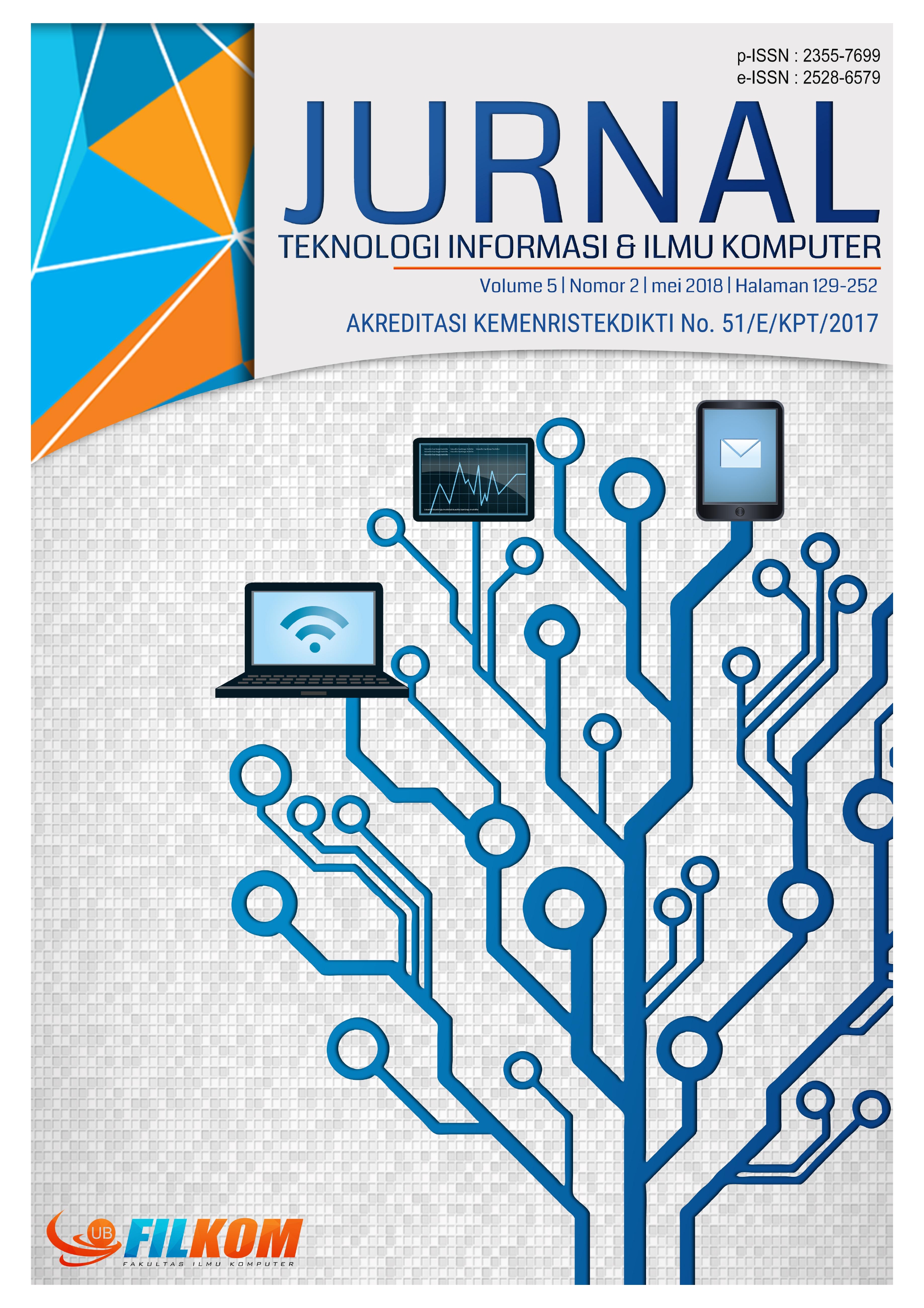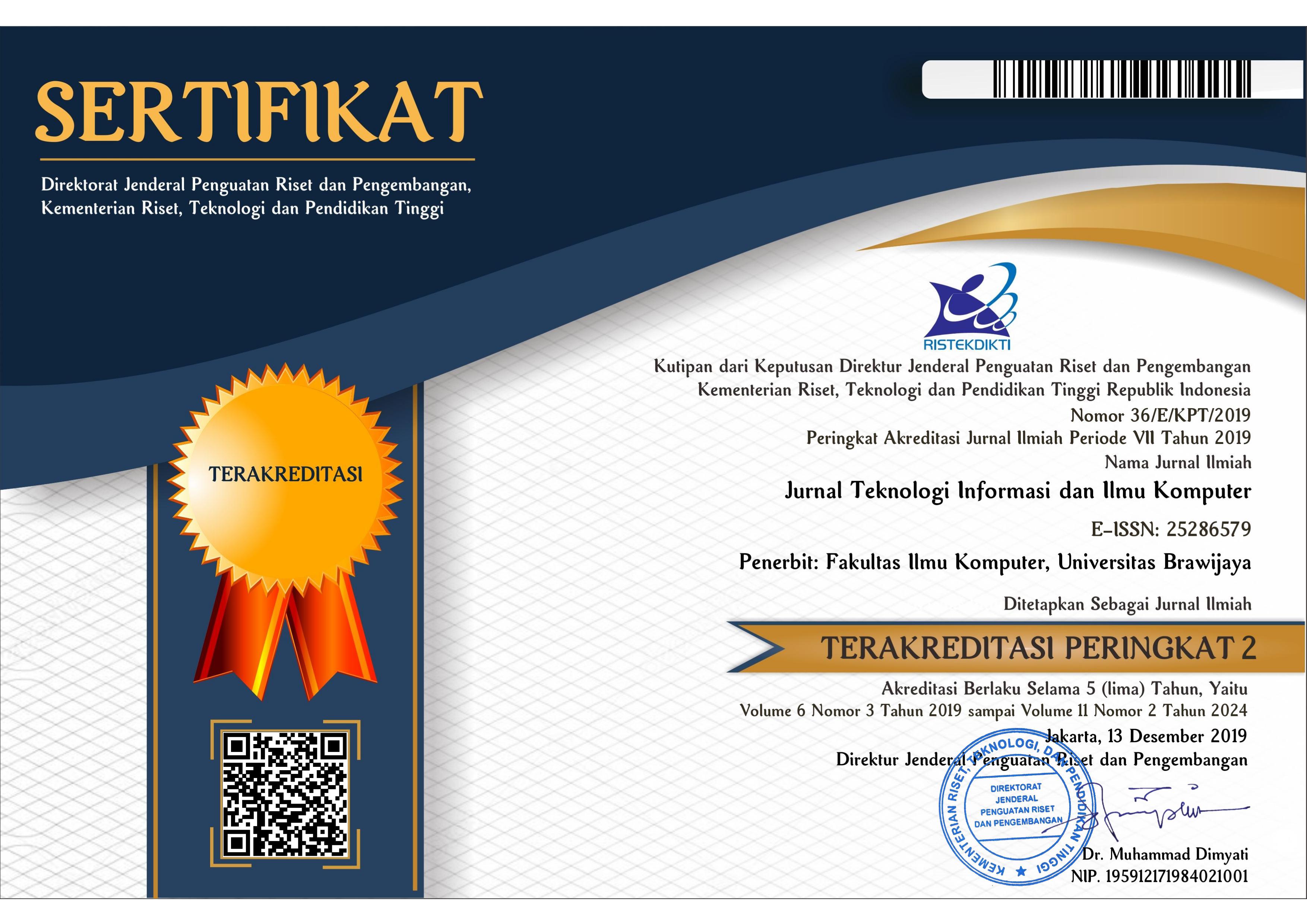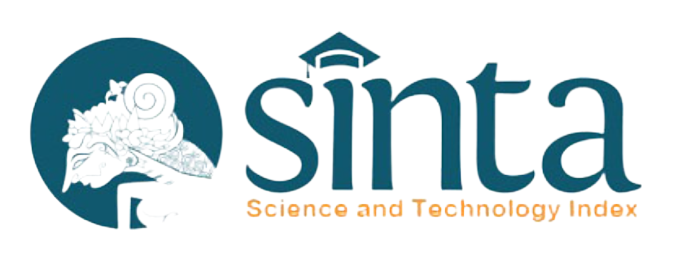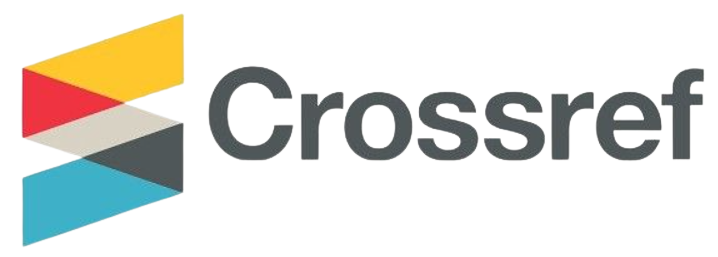Automatic Question Generation (AQG) Dari Dokumen Teks Bahasa Indonesia Berdasarkan Non-Factoid Quesion
DOI:
https://doi.org/10.25126/jtiik.201852664Kata Kunci:
Automatic Question Generation (AQG), Naïve Bayes Classifier, Chunking LabellingAbstrak
Automatic Question Generation (AQG) adalah sistem yang dapat membangkitkan pertanyaan secara otomatis dari teks atau dokumen dengan menggunakan metode atau pola-pola tertentu. Diharapkan sistem AQG yang dikembangkan bekerja seperti halnya manusia membuat pertanyaan setelah diberikan suatu teks. Manusia dapat membuat pertanyaan, dikarenakan manusia dapat memahami teks yang diberikan dan berdasarkan pengetahuan-pengetahuan yang dimilikinya. Untuk mengembangkan sistem AQG penelitian ini, dilakukan kombinasi beberapa metode diantaranya algoritme Naive Bayes Classifier untuk mengklasifikasikan kalimat ke dalam jenis kalimat non-factoid. Chunking labelling untuk memberikan label pada masing-masing kalimat dari hasil klasifikasi dan pendekatan template untuk mencocokan hasil kalimat dengan template pertanyaan yang dibuat. Hasil pertanyaan yang dihasilkan oleh sistem akan diukur berdasarkan paramater yang telah ditentukan yang didasarkan atas pengukuran recall, precision dan F-Measure. Dengan adanya sistem AQG ini diharapkan dapat membantu guru mata pelajaran Biologi untuk membuat pertanyaan secara otomatis dan efektif serta efisien.
Downloads
Referensi
AJMERA, J 2014, Automatic Generation of Question Answer Pairs From Noisy Case Logs, IEEE 30th International Conference.
Ali, CHALI dan HASAN., 2010, Automatic Question Generation from Sentences, pp. 19–23, Proc. TALN 2010.
AL-YAHYA, M., 2011., A Question Generation Engine for Educational Assesment Based on Domain Ontologies, 11th IEEE International Conference on Advanced Learning Technologies, pp. 393-395.
AMINUDIN dan ALWI., 2018, Analisa Multithreading pada Sistem Rekomendasi Menggunakan Metode Collaborative Filtering dengan Apache Mahout, Techno, vol. 17. No. 1, pp 1-11.
BEDNARIK. L & KOVACS. L 2012, Automated EA-type Question Generation from Annotated Texts, 7th IEEE International Symposium on Applied (computational lntelligence and Informatics), pp. 191-195.
DAS, R, ELIKKOTIl, A & KALADY, S 2010, Natural Language Question Generation Using Syntax and Keywords', Proceedings of the Third Workshop on Question Generation, Pittsburgh
EFFENBERGER, T., 2015, “Automatic Question Generation and Adaptive Practice,”.
FATTOH, A. E. ABOUTABL dan HAGGAG., 2015, Semantic Question Generation Using Artificial Immunity, vol. 7, no. 1, pp. 1–8, Int. J. Mod. Educ. Comput. Sci.
FACHRURROZI. M., 2013, Sistem Pembangkit Pertanyaan Otomatis Dengan Metode Template-Based.
GARG, S & GOYAL, V 2010, System for Generating Questions Automatically From Given Punjabi Text, Punjabi University, p. 324.
HAN, J dan KAMBER, M 2006, Data Mining: Concepts and Techniques, 2nd edn, Morgan Kauffman Publisher, San Francisco.
HEILMAN, M 2011, Automatic Factual Question Generation from Text, Carnegie Mellon University, Pittsburgh.
HEILMAN, M & SMITH, AN 2009, Question Generation via Overgenerating Transformations and Ranking, Carnegie Mellon University, Pittsburgh.
KALADY. S, ELIKKOTIL. A dan DAS. R., 2010, Natural Language Question Generation Using Syntax and Keywords, p. 91, Tenth Int. Conf. Intell. Tutoring Syst.,
P. MANNEM. P, PRASAD. P dan JHOSI. A., 2010 Question Generation from Paragraphs at UPenn : QGSTEC System Description, pp. 84–91 Proc. QG Third Work. Quest. Gener. Pittsburg, PA,.
WIJOYO. S, HERLAMBANG. A, ROZI. F, ISANTA. S., 2017, Optimasi Suffix Tree Clustring dengan Wordnet dan Named Entity Recognition untuk Pengelompokan Documen, Jurnal Teknologi Informasi dan Ilmu Komputer (JTIIK), vol. 4, No. 4, pp, 263-267
SUWARNINGSIH.W, SUPRIANA, A. dan PURWARIANTI., 2014, Tantangan dan Peluang pada Question Generation, vol. 6, no. 2, pp. 719–730, J. Sist. Inf.
TING, S.L. dan TSANG A. H. C., 2011 “Is Naïve bayes a good classifier for document classification?, vol. 5, no. 3, pp. 37–46 Int. J. Softw. Eng. its Appl.
TAN.P-N, STENIBACH, M dan KUMAR V., 2006, Introduction to Data Mining, Addison-Wesley Companion Book Site , United States.
Unduhan
Diterbitkan
Terbitan
Bagian
Lisensi

Artikel ini berlisensi Creative Common Attribution-ShareAlike 4.0 International (CC BY-SA 4.0)
Penulis yang menerbitkan di jurnal ini menyetujui ketentuan berikut:
- Penulis menyimpan hak cipta dan memberikan jurnal hak penerbitan pertama naskah secara simultan dengan lisensi di bawah Creative Common Attribution-ShareAlike 4.0 International (CC BY-SA 4.0) yang mengizinkan orang lain untuk berbagi pekerjaan dengan sebuah pernyataan kepenulisan pekerjaan dan penerbitan awal di jurnal ini.
- Penulis bisa memasukkan ke dalam penyusunan kontraktual tambahan terpisah untuk distribusi non ekslusif versi kaya terbitan jurnal (contoh: mempostingnya ke repositori institusional atau menerbitkannya dalam sebuah buku), dengan pengakuan penerbitan awalnya di jurnal ini.
- Penulis diizinkan dan didorong untuk mem-posting karya mereka online (contoh: di repositori institusional atau di website mereka) sebelum dan selama proses penyerahan, karena dapat mengarahkan ke pertukaran produktif, seperti halnya sitiran yang lebih awal dan lebih hebat dari karya yang diterbitkan. (Lihat Efek Akses Terbuka).












